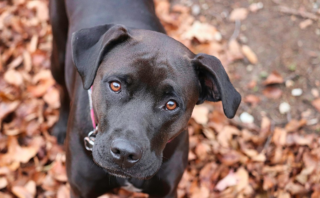Easy-to-follow Dog Training Methods for Kids: A Guide
Dog training for kids is more than just teaching tricks; it is an interactive process that can both educate and inspire. It’s a fun and engaging way for kids to learn responsibility, empathy, and patience. More importantly, it creates a bond between the child and the dog based on mutual respect and understanding.
First and foremost, kids need to understand that dogs are not toys, but sentient beings with feelings. Dogs need to be treated with kindness and respect. Training a dog could be the perfect platform to impart these lessons to children.
Essential Tips for Dog Training for Kids
Choose dog-friendly methods
This is the first stepping stone in dog training for kids. Training methods should be dog-friendly and aim to teach the dog to associate good behavior with rewards rather than fearing punishment.

These methods include:
- Positive Reinforcement: This involves rewarding your dog when they behave correctly. The treat could be a pet-friendly snack, a toy, or verbal praise.
- Clicker Training: This method uses a sound (a click) to tell the dog when they have done something right, followed by a reward.
Respect the dog's space
Kids need to learn to respect a dog’s boundaries. They should never disturb a dog when they are eating or sleeping. Similarly, not all dogs appreciate hugs or being picked up. Respecting your dog’s space reduces the risk of bites and other accidents.
Gentle handling
Loud and sudden movements can scare dogs. Kids must learn to interact with the dog in a calm and gentle manner to prevent any aggression or fear from the dog.
Frequently Asked Questions
1. How young can a child start training a dog?
While it largely depends on the child’s maturity and patience level, a general starting point is around five to six years old.
2. What are the best kinds of dogs for kids to train?
Any breed can be trained by kids, given the correct approach. However, some breeds known for their patient and gentle nature include Golden Retrievers, Labrador Retrievers, Boxers, Beagles, and Bulldogs.
3. Can kids train older dogs?
Yes, though older dogs may require more patience and persistence compared to younger ones. Remember there’s truth in the saying, “You can teach old dogs new tricks.”
4. How long should kids spend training the dog each day?
Typically, 10-20 minutes a day is sufficient. Keep it fun and engaging for optimal results.
5. How can parents help at home?
Parents should reinforce the training by reminding children to practice what they have learned and upholding the rules consistently.
6. What can I do if the dog is not receptive to the training?
If the dog is unresponsive, it may help to bring in a professional trainer for assistance. They can provide useful guidance and address any specific challenges.

Conclusion
To conclude, dog training can be a rewarding experience for kids teaching them valuable life skills. It’s a unique activity that requires patience, consistency, and a positive attitude. Kids learn about responsibility while creating a bond with their furry friend.
Remember, it’s okay to ask for help from a professional dog trainer if needed; it’s all part of the learning process. Lastly, make sure to use positive reinforcement to reward your dog for their progress, creating a happy learning environment for both the child and the dog.
In the end, dog training is much more than just teaching a dog to sit or stay; it’s about understanding a dog’s needs, forging a bond of trust, and growing together as best friends.



